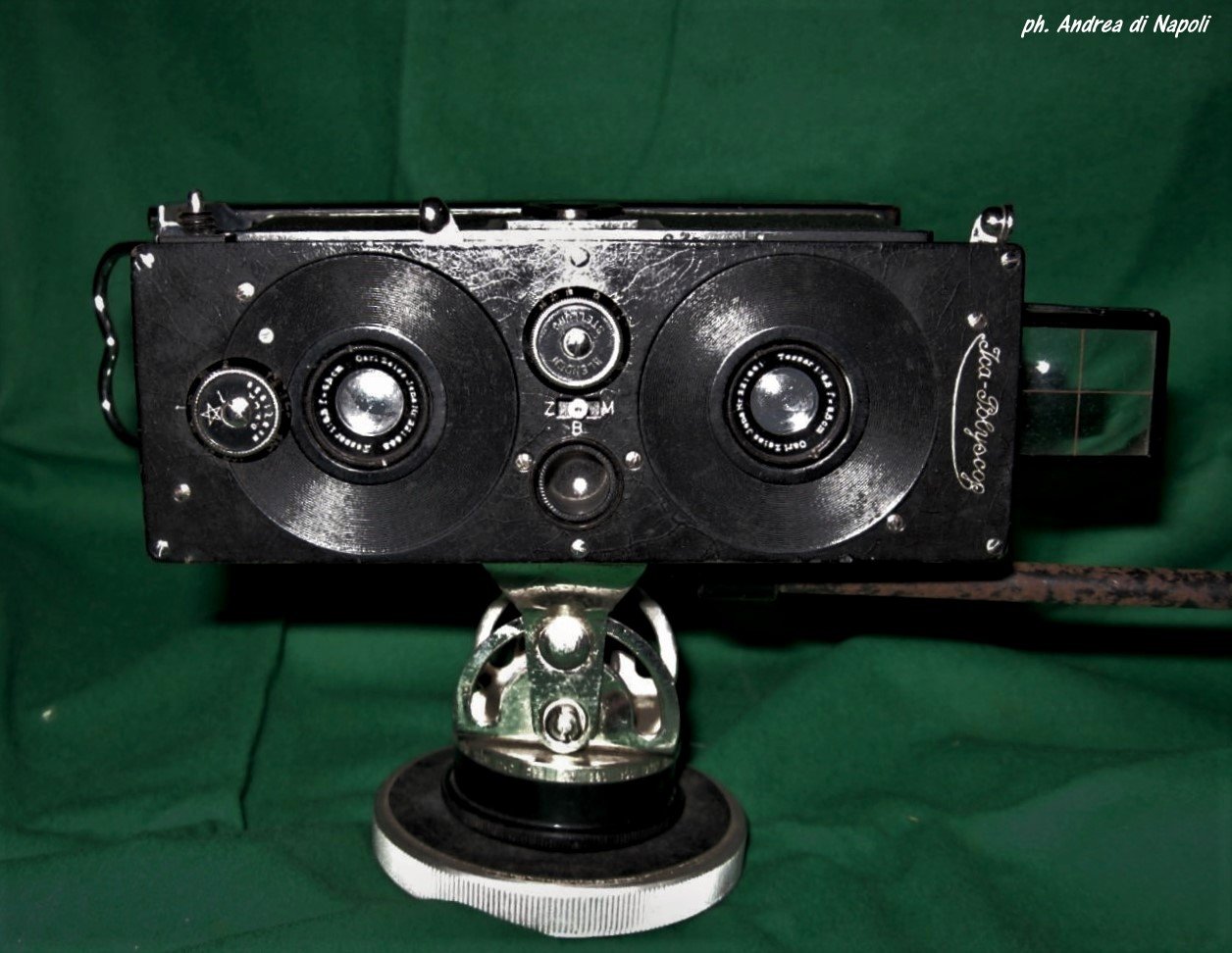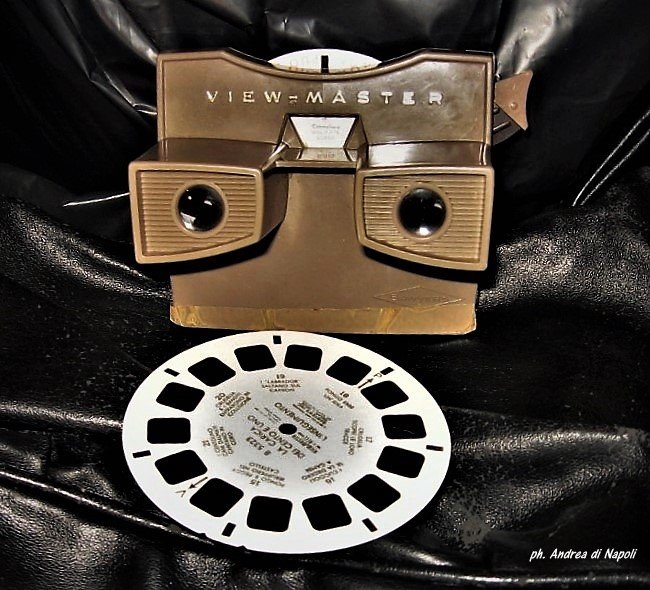Le immagini realizzate con una comune tecnica fotografica ci forniscono solitamente una rappresentazione limitata dalle dimensioni della lunghezza e dell'altezza del supporto sensibile utilizzato. Per ottenere la percezione visibile anche della profondità fu messo a punto, intorno al 1852, un apparecchio stereoscopico munito di due obiettivi paralleli.

Il nostro cervello percepisce le distanze grazie al confronto tra la visione differente dei nostri due occhi. Analogamente, osservare contemporaneamente le fotografie acquisite attraverso due obiettivi distanti tra loro cm.6,35, come gli occhi, consentirà la visione bioculare della realtà.
Le immagini stereoscopiche ottennero un successo commerciale straordinario. I pionieristici “fotorepoter” dell'Ottocento, come Sevaistre, documentarono importanti eventi storici con la tecnica stereoscopica. Ad uso dei turisti, invece, vennero realizzate le stereoscopie dei monumenti principali della grandi città ed anche in molti atelier i fotografi ricorsero alla stereoscopia per eseguire i “ritratti posati” di distinte modelle.

Per osservare le fotografie ottenute con questa tecnica occorreva inserirle, una alla volta, in un apposito visore che permetteva di apprezzarne l'effetto tridimensionale. Molti anni più tardi le diapositive stereoscopiche a colori montate su un supporto circolare si potevano guardare più velocemente attraverso un visore di plastica munito di una comoda levetta che ne regolava l'avanzamento. Era considerato solo un giocattolo, ma consentiva l'osservazione bioculare di immagini fisse, qualitativamente valide, delle bellezze naturali o dei cartoni animati, appositamente prodotte e messe in commercio per il divertimento generale. Sia il visore che un ricco assortimento di fotografie sui tipici dischetti sono stati facilmente reperibili quasi fino al 2000.

Gli affascinanti esemplari, inizialmente colorati a mano, e la visione particolarmente emozionante delle stereoscopie, contribuirono al duraturo successo di questa tecnica che, con poche modifiche ed aggiornamenti, per più di cent'anni ha soddisfatto tanto le esigenze dei collezionisti quanto la curiosità dei bambini.

ENG
Images made with a common photographic technique usually provide us with a limited representation of the dimensions of the length and height of the sensitive support used. In order to obtain the visible perception of the depth, around 1852 a stereoscopic apparatus was developed with two parallel objectives. Our brain perceives distances thanks to the comparison between the different vision of our two eyes. Likewise, observing the photographs acquired through two distant objectives, 6.35 cm each, like the eyes, will allow the biocular vision of reality at the same time.
Stereoscopic images achieved extraordinary commercial success. The pioneering "photorepoter" of the nineteenth century, like Sevaistre, documented important historical events with the stereoscopic technique. For the use of tourists, however, the stereoscopies of the main monuments of the big cities were realized and also in many studios the photographers resorted to stereoscopy to perform the "posed portraits" of distinct models. To observe the photographs obtained with this technique it was necessary to insert them, one at a time, in a special viewer that allowed to appreciate the three-dimensional effect. Many years later the color stereoscopic slides mounted on a circular support could be looked at faster through a plastic visor fitted with a handy lever that regulated its progress. It was considered only a toy, but allowed the biocular observation of fixed images, qualitatively valid, of natural beauties or cartoons, specially produced and marketed for general entertainment. Both the viewer and a rich assortment of photographs on the typical disks were easily available almost until 2000. The fascinating specimens, initially colored by hand, and the particularly exciting vision of stereoscopies, contributed to the lasting success of this technique which, with few modifications and updates, for over a hundred years has satisfied both the needs of the collectors and the curiosity of the children .
